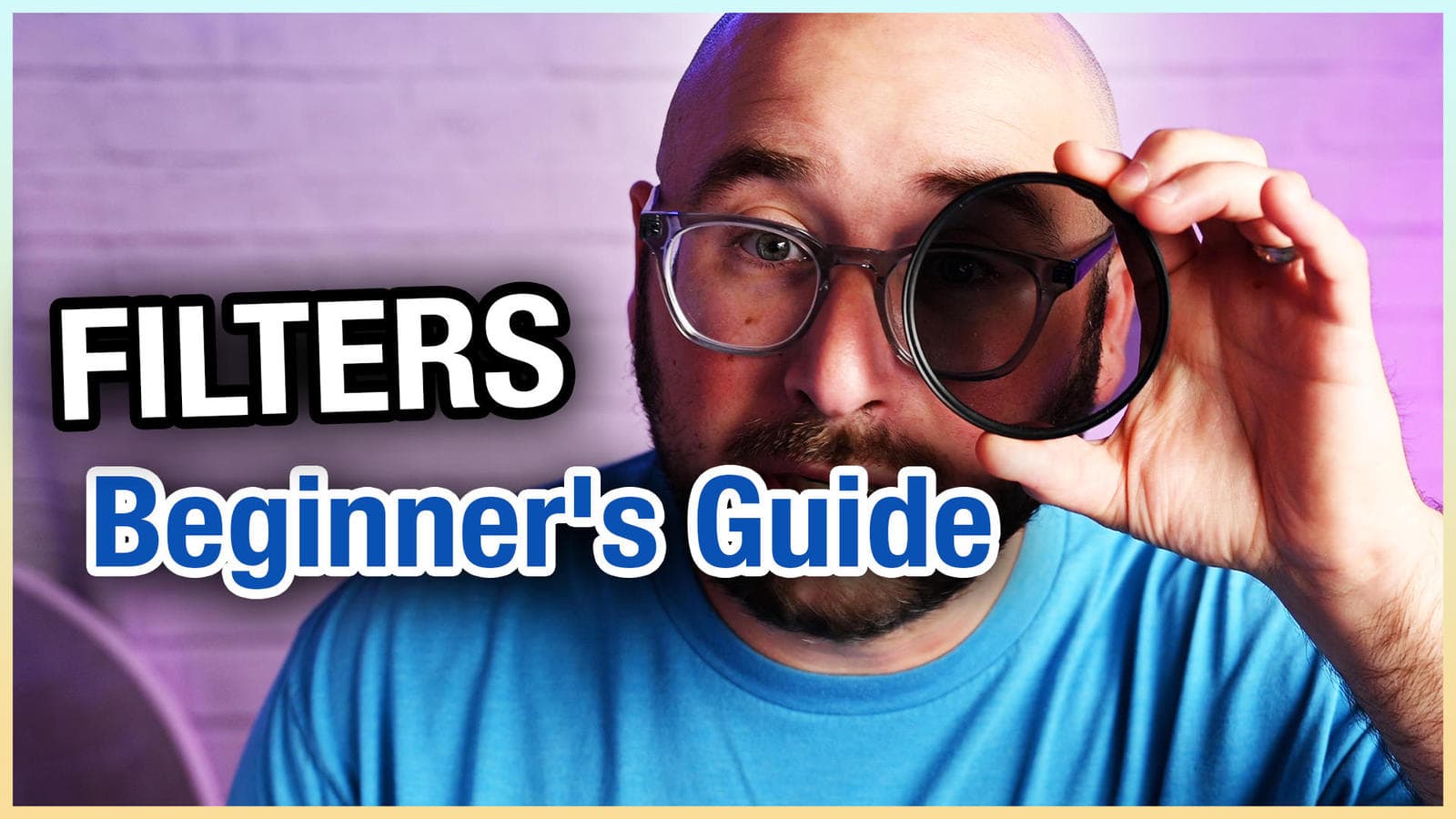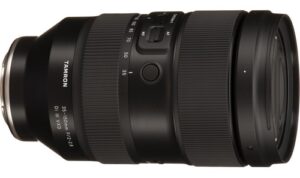There is a wide variety of camera lens filters available to modify, enhance, or distort your photographs. But not all camera lens filters are equal. Some degrade the quality too much. Some have little to no purpose and some are like a magical unicorn you wish you knew about earlier. In this video, you learn about the basics of camera lens filters. This is the camera lens filters beginner’s guide.
Transcription was done by Descript‘s automated transcription services which means it’s an AI-generated transcript. The transcript may contain spelling, grammar
Filters are one of those things that you either use. You don’t use them. I’ve never seen people who are on the fence about using that and that like are either using them here and there that aren’t there or they’re using them or they’re not using them. So let’s talk about filters P this has got one gift. What’s a storyteller with a camera talking about all the things photographers like you and I are thinking about. And in this video, I won’t talk about filters, lens filters, filters that do things too. Your images that can impact your images either positively or negatively. And I want to talk about specifically ones that are useful and why they’re useful. There are a wide range of filters out there for your lenses. There are filters that go screw onto your lens. Like this one, there are filters that just slide in front of your lens with an amount of time [inaudible] there are filters that magnetize to the front or the back of your lead’s.
There’s a wide range. So let’s talk about what type of filters are common and how they’re beneficial or not beneficial to you as a photographer. The first filter, the one that’s probably most common is the UV filter. Now this one is from ProMaster. There’s a ton of companies who make them this one just happened to be brand new in the case, because I’ve never opened it. This is a 77 millimeter filter. It fits on a wide range of lenses. Yeah, it’s just a clear piece of glass. This filter used to have a big purpose, basically blocking UV light from transmitting to your camera. But in the digital age, it’s not really necessary because there’s UV filters on top of the sensor in your camera. So really a UV filter. All it is is protection. Where if you drop your camera, if something hits your camera on the lens, it’s going to break the filter before it breaks your lens.
UV filters are really just protection. Now, if you want to protect your lens, sure. If you filter in front of it, however, know that you’re adding additional glass, which has the possibility of it degrading the quality of your images. Now, this is a circular polarizer. This happens to also be from ProMaster. This is, is a polarized piece of glass that actually can turn and either get darker or lighter, depending on how you turn it. Now, the benefit of this is for multiple things. One, it can act as sort of a neutral density, which we’ll get to in a minute and dark in your scene so that you can have a longer shutter, but really the purpose of this easily, you can see better in harsh sunlight. You can see through water or see that clouds more, see out windows, removing reflections in the windows. It does things like that.
If you don’t have a polarizer, then just take sunglasses that are polarized and put them in front of your face. And you’ll see exactly what this does. You’ll see blues be more rich green to be more rich and so on and so forth. The thing was circular polarizers, that if you start twisting the opposite direction, you can actually pop it apart into two different pieces. So be careful what you’re doing. I use a polarizer a lot. Uh, I use it if I’m not using an ND filter, this is the one I’m using. This is also 77 millimeter. But if I am using my ND filters, mandatory neutral density filters, which we’ll get to in a minute, then I actually have a bigger one. That actually is part of my mouth, which you’ll also see in a minute. No. When it comes to neutral density filters, these are also things that are very, very particular, very specific about where you use them and why.
So a neutral density filter it’s purpose is literally to block light. It makes it so that less light travels through the filter into your camera. So if I was to hold this up in front of it, you will see the image gets quite dark. When it comes into neutral density filters, there are a variety of types. There’s one stops, two stops, three steps, six stops, nine stops, 12 stops, 16 stops. I’ve even seen 20 stop filters. If you want to learn a ton more about neutral density filters and long exposure photography, just click right there. I have a whole course on it available to you. I even have an ebook if you want to buy just the book and not the course. Now this is a three stop filter. This is actually from white house custom color, and this is a screw on filter, similar to the UV and the polarizer that you just saw before.
But when it comes to neutral density filters, there’s another method, another style of neutral density filter. And that is the slot in style. And that is where you put a Mount on front of your camera on, on front of your lens. And then you can slide in the neutral density filters that are actually flat pieces of glass. Now, the advantage of that is that you can actually do a graduated filter, which means that it goes from clear to dark on one sheet of glass. Whereas this one is completely solid and you can not see through it. They also make graduated filters, which look like this. As you can see, it goes from dark to light. There’s a big difference there. Now what is in here? This frame is actually also from white house custom color for their, for their holder kit for their system. The filters I have in here are actually from format high-tech eventually I plan on switching to white house custom color when I need to replace these.
So the goal with a neutral density filter is to extend the shutter speed or make it so you need to open the aperture more. So if you are trying to do portraits outside or do a video outside in harsh sunlight, and you want to open up your aperture to something like 1.2, 1.4, something like that. And neutral density filter is a great way to do that because it’s going to block light and make us that you have no choice, but to open it up, or if you want a longer shutter speed, you can also drop one of these, your lens. And it’s going to force you to open up the shutter speed to a longer speed. Now it is worth noting. And while I do not have one to show you that they also make a neutral density filter called a variable and D or V and D, which is kind of like a Polaroid where you can turn the filter to adjust your density from one to six or whatever it is the problem with this is that they’re not actually a neutral density filter.
These are two polarizers, basically connected to each other, that twist. And the problem is that you had timed. You can either get vignetting distortion or color shifting, or even worse, this beautiful X in the middle of your image. So I do not recommend variable and D’s for photographers, but for videographers, when you’re just trying to move real fast and you just need a quick adjustment of our variable, Andy might be enough cause you don’t need to do too much at times. And if you to get to the point where there’s that, because I started showing up, you’re going to want to make other adjustments anyway. So those are the most common types of lens filters. There are a variety, additional ones that are out there, but those are the most common ones. And hopefully you can walk away from this video, understanding more of what is out there and then make a decision based on that to determine if you actually need any of them, because really you don’t, unless you want to get very particular. If you like this video, click that subscribe button below. Right now, I publish new videos every Monday and Thursday, whenever possible. You don’t want to miss it.







